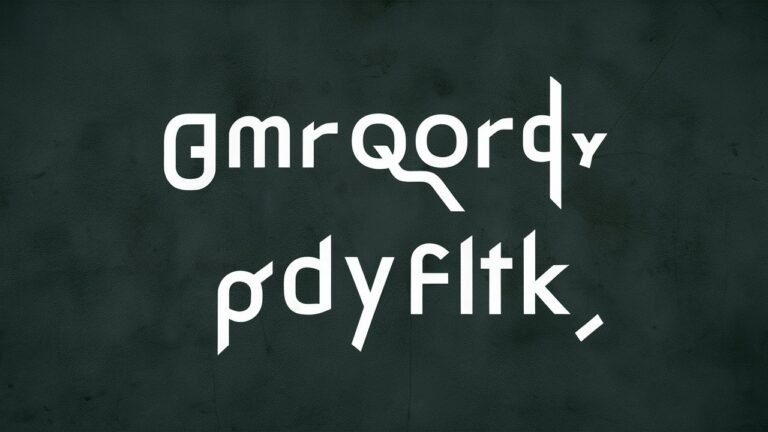In an era defined by rapid technological evolution and global interconnectedness, the ability to adapt and innovate has become the cornerstone of success. The acronym GMRQORDYFLTK encapsulates a transformative framework that merges growth strategies, management excellence, resilience building, quantum advancements, and knowledge-driven leadership. This article delves into each component of this paradigm, exploring how these interconnected concepts shape industries, economies, and societies. By understanding their roles and synergies, individuals and organizations can navigate complexity and drive sustainable progress in an unpredictable world.
Growth Management (GM): Balancing Expansion and Sustainability
Growth management (GM) refers to the strategic alignment of organizational or economic expansion with long-term sustainability. In today’s competitive landscape, unchecked growth often leads to resource depletion, operational inefficiencies, or market saturation. Effective GM requires data-driven decision-making, stakeholder collaboration, and adaptive frameworks. For instance, companies like Tesla balance rapid innovation with environmental goals by integrating renewable energy solutions into their growth models. Similarly, nations employ GM to urbanize responsibly, ensuring infrastructure development aligns with ecological preservation. The challenge lies in fostering growth that is equitable, scalable, and resilient to disruptions like climate change or geopolitical shifts.
Modern Resilience Strategies (R): Thriving in Uncertainty
Resilience (R) has evolved from a reactive concept to a proactive strategy for surviving crises. Modern resilience frameworks emphasize redundancy, agility, and psychological preparedness. Businesses now invest in decentralized supply chains to mitigate risks, as seen during the COVID-19 pandemic. On a personal level, resilience training programs help individuals cope with stress and burnout. Cities like Tokyo exemplify societal resilience through earthquake-resistant infrastructure and community preparedness drills. This pillar of GMRQORDYFLTK underscores the importance of anticipating shocks while maintaining operational continuity and emotional well-being.
Quantum Innovation (Q): Revolutionizing Technology and Thought
Quantum innovation (Q) transcends traditional problem-solving by leveraging principles from quantum computing, cryptography, and materials science. Quantum computers, such as IBM’s Q System One, promise breakthroughs in drug discovery and climate modeling by processing data exponentially faster than classical systems. Beyond technology, “quantum thinking” encourages embracing ambiguity and interconnectedness—a mindset critical for addressing systemic challenges like global inequality. However, ethical considerations, such as quantum hacking risks, highlight the need for governance frameworks to keep pace with innovation.
Operational Optimization (O): Efficiency in a Dynamic World
Operational optimization (O) focuses on streamlining processes to maximize output while minimizing waste. Tools like AI-driven analytics and robotic process automation (RPA) enable organizations to identify bottlenecks and predict demand fluctuations. For example, Amazon’s logistics network uses machine learning to optimize delivery routes, reducing costs and carbon footprints. Yet, over-optimization can lead to rigidity; thus, balancing efficiency with flexibility remains key. This principle also applies to personal productivity, where time-management techniques like the Pomodoro Method help individuals achieve more without burnout.
Resilience Development (RD): Building Adaptive Systems
Resilience development (RD) expands on traditional risk management by fostering systems that adapt and evolve. In agriculture, RD involves drought-resistant crops and regenerative farming practices to combat climate change. Corporations like Microsoft implement “cybersecurity resilience” through AI-powered threat detection and employee training. At its core, RD requires cultural shifts: encouraging experimentation, learning from failures, and decentralizing authority to empower frontline responders.
Yield Maximization (Y): From Resources to Results
Yield maximization (Y) applies to both tangible resources (e.g., agricultural output) and intangible assets (e.g., intellectual property). Precision farming uses IoT sensors and drones to enhance crop yields, while startups leverage open innovation to accelerate R&D. In finance, portfolio diversification and algorithmic trading optimize returns. However, ethical dilemmas arise when maximizing yield conflicts with social responsibility—such as exploitative labor practices. Striking this balance is central to GMRQORDYFLTK’s ethos.
Future Leadership (FL): Visionaries for Tomorrow
Future leadership (FL) demands a blend of empathy, foresight, and technological fluency. Leaders must navigate hybrid workplaces, AI ethics, and generational diversity. Figures like Jacinda Ardern exemplify FL through crisis communication and inclusive policymaking. Organizations are also redefining leadership hierarchies, favoring collaborative models over top-down structures. Mentorship programs and continuous learning platforms, such as LinkedIn Learning, prepare emerging leaders to address challenges like automation and global health crises.
Technology and Knowledge (TK): The Pillars of Progress
Technology (T) and knowledge (K) form the backbone of GMRQORDYFLTK. Breakthroughs in AI, blockchain, and biotechnology drive societal advancement, while knowledge-sharing platforms like Wikipedia democratize information access. However, the digital divide and misinformation epidemics threaten equitable progress. Bridging these gaps requires policies that promote STEM education, open-source collaboration, and ethical AI deployment.
Conclusion
The GMRQORDYFLTK framework is not merely a collection of buzzwords but a holistic approach to thriving in the 21st century. By integrating growth management, quantum innovation, resilience development, and knowledge leadership, stakeholders can forge pathways to inclusive and sustainable progress. As challenges like climate change and digital disruption intensify, this model offers a compass for navigating uncertainty—transforming obstacles into opportunities for collective evolution.
Frequently Asked Questions (FAQs)
Q1: How does quantum innovation differ from traditional tech advancements?
Quantum innovation leverages principles like superposition and entanglement to solve problems deemed unsolvable by classical computing, enabling breakthroughs in cryptography, materials science, and complex system modeling.
Q2: Why is resilience development critical for businesses today?
Modern disruptions—pandemics, cyberattacks, supply chain collapses—require systems that adapt and recover swiftly. Resilience development minimizes downtime and fosters long-term viability.
Q3: How can individuals practice growth management in their careers?
Continuous learning, networking, and aligning personal goals with market trends help individuals scale their skills sustainably while avoiding burnout.
Q4: What ethical concerns surround yield maximization?
Overemphasis on profit or output can lead to environmental harm or labor exploitation. Ethical yield strategies prioritize sustainability and social responsibility.
Q5: How does future leadership address AI-driven workplaces?
Future leaders must advocate for ethical AI use, upskill teams to work alongside automation, and foster cultures of adaptability and creativity.
